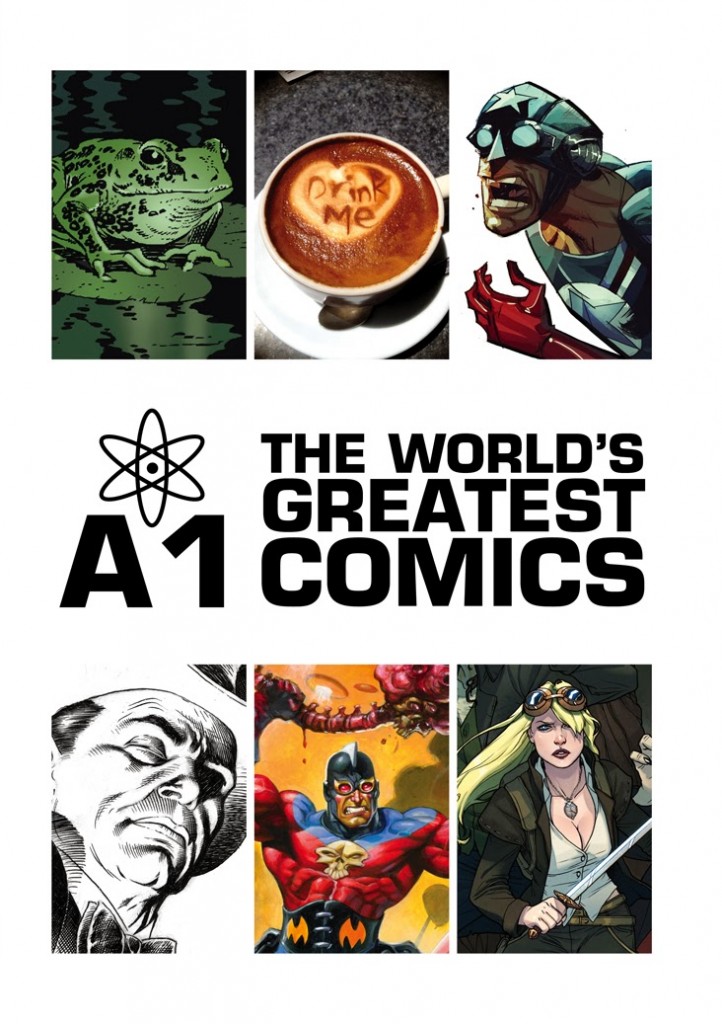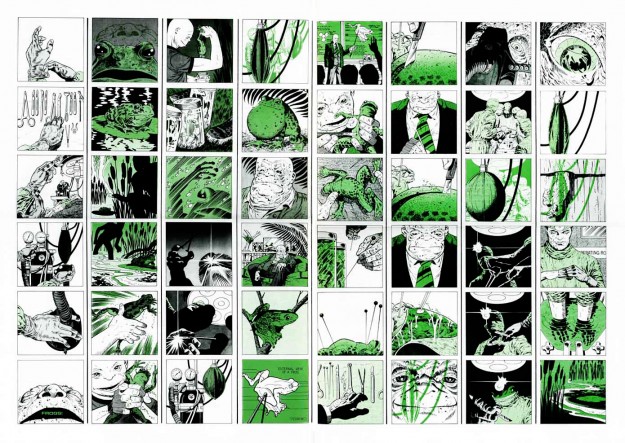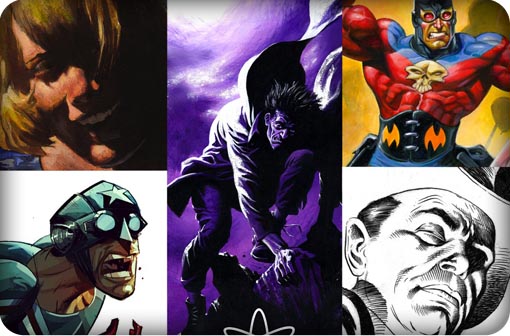A1: The World’s Greatest Comics – Lots of content, not enough context
I grew up reading a ton of fiction anthology series. Everything from Sword and Sorceress to stuff like Cats, Magical Familiars! and I loved them, even when they revolved around talking cats (or maybe especially). As I got more into comic books, I started picking up some comic anthologies, such as Dark Horse Presents. So when Titan Comics offered us a copy of A1: The World’s Greatest Comics I jumped up and frantically waved my hand (well, the email equivalent of doing so, which involved a lot of exclamation points). But I think what I think of as an “anthology” and what A1 actually is, varies…more than a bit.
 So first off, A1 is not a new franchise for comics anthologies, actually. It originally ran for six issues in 1989 from Atomeka Press and then in 1992, resumed under Marvel for only four issues. In 2004, Atomeka began publishing the anthology again and in 2013, Titan Comics came along to help Atomeka really revive its tentpoles like A1.
So first off, A1 is not a new franchise for comics anthologies, actually. It originally ran for six issues in 1989 from Atomeka Press and then in 1992, resumed under Marvel for only four issues. In 2004, Atomeka began publishing the anthology again and in 2013, Titan Comics came along to help Atomeka really revive its tentpoles like A1.
The thing is, in an anthology that really espouses the past, present and future of comics, The World’s Greatest Comics doesn’t feel the need to really give you any background on the franchise, despite its own place in comics history. As a younger comics fan (in comparison to those who may have read A1 in its original ’89 print), everything I know about A1 is from internet research. The World’s Greatest Comics runs a lot of older material as well as newer, so this would have been an excellent edition to talk about the series’s background and where it’s going.
The same can really be said about the material that the anthology contains. There’s some great stories in The World’s Greatest Comics, though I would be loathe to say the anthology really lives up to the name. There are, however, some really important creators contributing (mostly older work) as well as some notable appearing characters and interesting stories told. However, The World’s Greatest Comics doesn’t present any context for these stories. While each story is wrapped up with a backing page giving a short creator bio, that doesn’t provide the pop history context that this anthology needs.
The best anthologies have themes. I learned this back when I read all those genre print anthologies  back in the day and it’s been backed up by the few good graphic novel anthologies I’ve enjoyed such as The Sandman: Endless Nights. The World’s Greatest Comics could very easily have a theme by contextualizing the historical importance of the stories and creators contained within, but the graphic novel doesn’t even try. The only material to really reach for context is Frogs, Jim Steranko’s experimental ‘story’ from 1971. Frogs has a short essay along with it in The World’s Greatest Comics, in which Steranko talks about what he was thinking with this experimental version of comics and charts his creative processes with the material. While I didn’t enjoy Frogs, I did like reading about Steranko’s motivations and desires. I would have loved to see more essays like this from creators at the back of each story, even if that would have meant the exclusion of a story or two.
back in the day and it’s been backed up by the few good graphic novel anthologies I’ve enjoyed such as The Sandman: Endless Nights. The World’s Greatest Comics could very easily have a theme by contextualizing the historical importance of the stories and creators contained within, but the graphic novel doesn’t even try. The only material to really reach for context is Frogs, Jim Steranko’s experimental ‘story’ from 1971. Frogs has a short essay along with it in The World’s Greatest Comics, in which Steranko talks about what he was thinking with this experimental version of comics and charts his creative processes with the material. While I didn’t enjoy Frogs, I did like reading about Steranko’s motivations and desires. I would have loved to see more essays like this from creators at the back of each story, even if that would have meant the exclusion of a story or two.
Lack of theme and context aside, the material in The World’s Greatest Comics was pretty hit or miss for me, but that’s entirely based on the types of comics I enjoy reading. I really liked Weird’s Finest, Bambos Georgiou’s Superman/Batman satire that does a good job examining why Batman gets to be the broody one and why Superman has to smile. I also enjoyed The Riddle of the Recalcitrant Refuse, a Mr. Monster story from Michael Gilbert and Alan Moore.
The thing is, the even with material from huge names like Moore, Kevin Eastman, and Jack Kirby, and with notable characters like Mr. Monster and Grendel, AI: The World’s Greatest Comics really falls flat without any common thread to tie these wildly diverse tales together. It feels like some one rifled through their box of single issues, grabbed some they liked or thought were ‘arty’ and put them in a trade. The diversity doesn’t help the anthology without context – instead we bounce from Sandy Plunkett’s winding classical art style (The Tale of Old Fennario) to Dominic Regan’s bizarre storytelling (Little Star) to an essay about coffee foam art (The Artful Latte from Depth Radius) .
It’s really frustrating because even with the hit or miss material, I think I would have really enjoyed this anthology if it would have embraced the background information about these creators, these characters, and these stories. Instead the tone and content jumps crazily around, pulling me from the immersion I may feel in one story and simply dumping me into the next with the empty promise that no, really, you’re totally reading the world’s greatest comics! But what makes these comics the best in the world? Give me that information along with the stories and you’ve got a great package, don’t try to let the material simply speak for itself when your material is so tonally diverse – it loses so much in the delivery that way. I feel like this anthology is only half the story.
A1 is a great idea, an idea that was important in 1989 and remains important at the end of 2013 – gather the past, present and future of comics and present them together for a real look at the substance of comic books. This is just Volume 1 of the new print of A1, so I’m hoping that coming volumes don’t fall so flat. This new version of A1 is on the right track, but it needs to stick the landing and give us context – tell us why you think these are really The World’s Greatest Comics.





